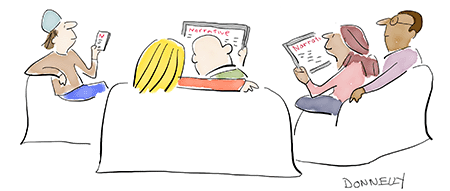IT WAS TEN P.M. on a Wednesday night in 1966 when George paid the cab driver and stepped out onto the sidewalk in front of McShane’s Bar & Grille. A tall, thin young man, slightly stooped, slightly pigeon-toed, with an odd narrow face unmarked by age or worry lines, a face so smooth and youthful it seemed that life must never have touched him. His face may thus have represented, by some hidden chemistry, the power of his will, since the method he had used to deal with pain—of which he had had his full human share—was denial. He did not deny pain’s existence, but only its power over him. (In this, he was of course mistaken.) He was twenty-eight, intelligent, and ignorant of the forces that moved him. More than most young men, he was entranced by the surface of life, not because he was shallow, but because he thought the surface might reveal some hitherto unknown (to him) route of access to the interior, to the inside of life, where he might finally become a man instead of a young man. He wanted an older face.
He felt a pleasant anticipation as he entered McShane’s, a writers’ hangout, where on any given night he could be sure of meeting a few friends, who, like himself, were unknown artists working on faith. The camaraderie of the place was satisfying. It assuaged the sense of loneliness he felt in his marriage, a college marriage he refused to examine out of fear of what he might find. His wife refused to come to McShane’s, perhaps for the same reason.



